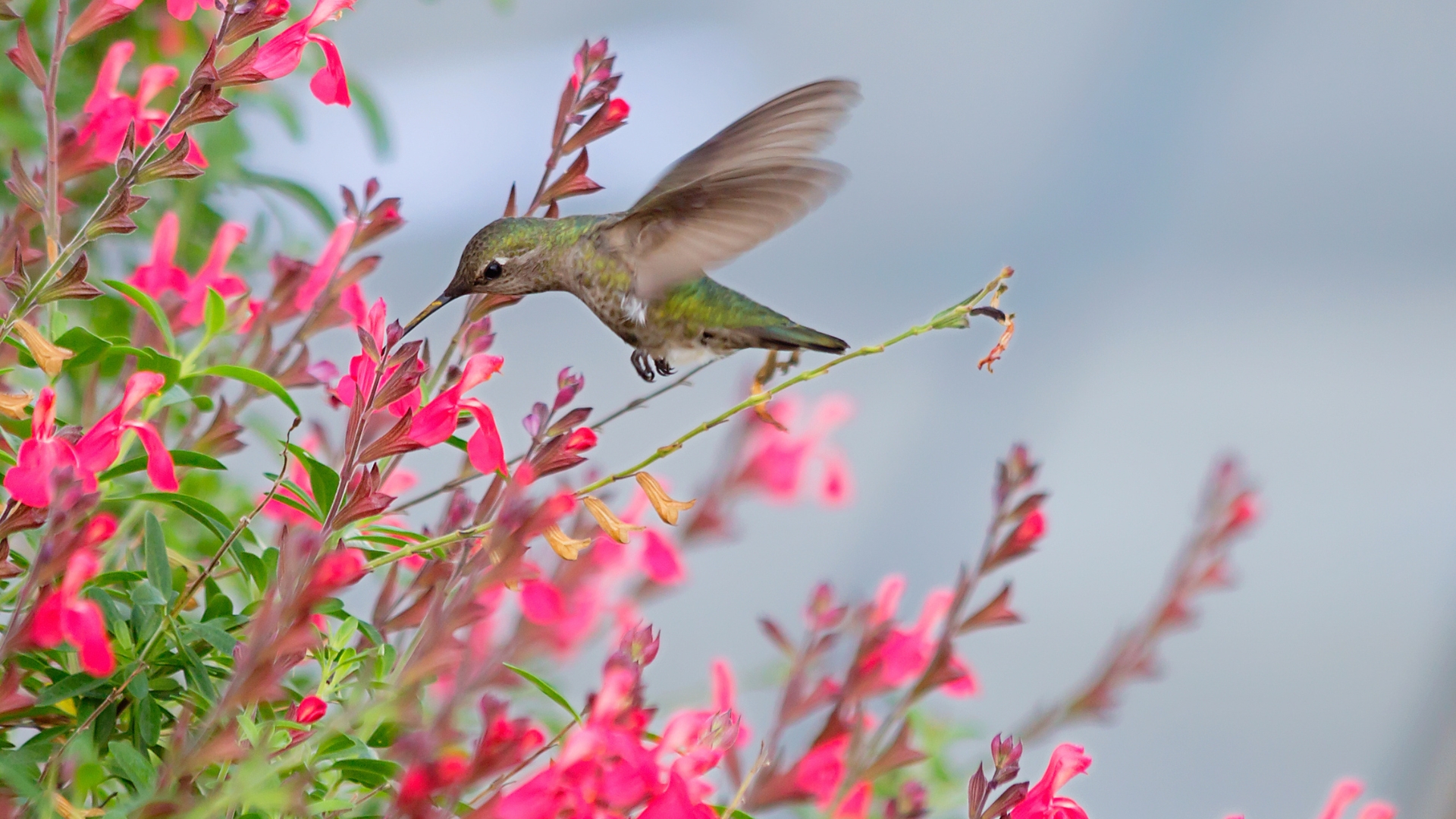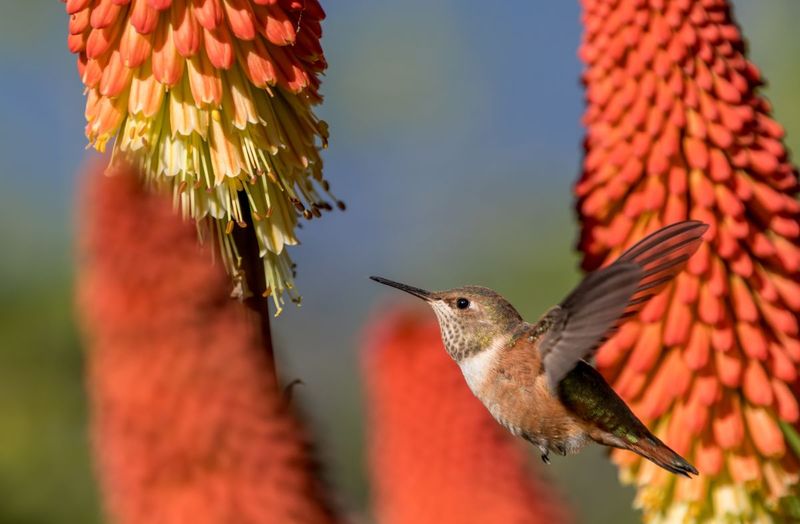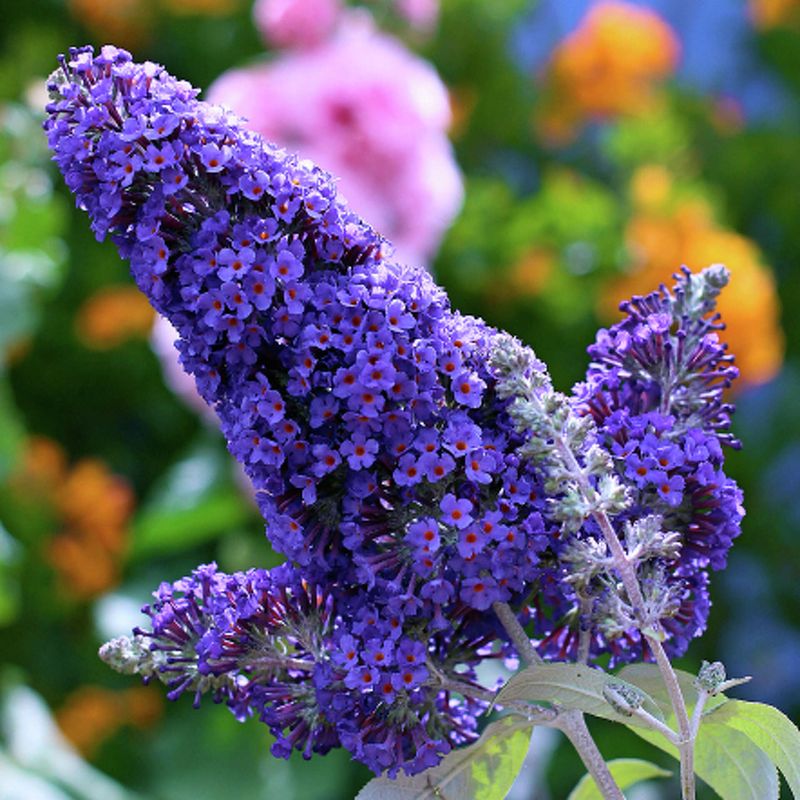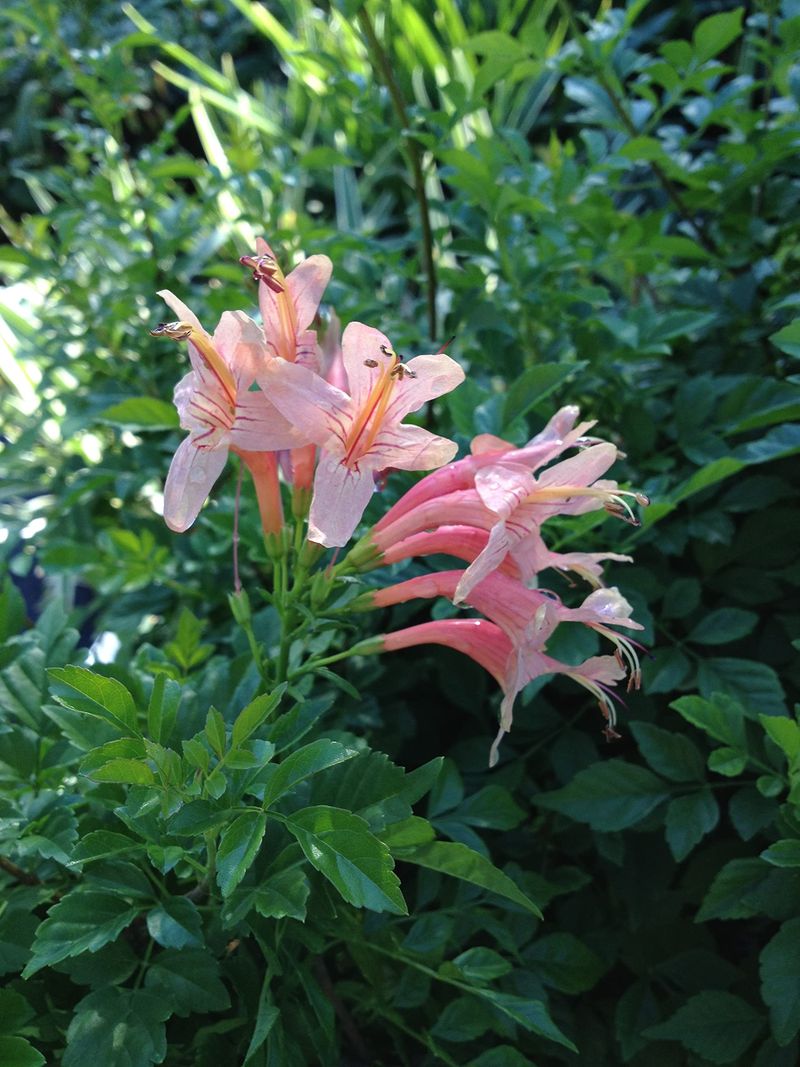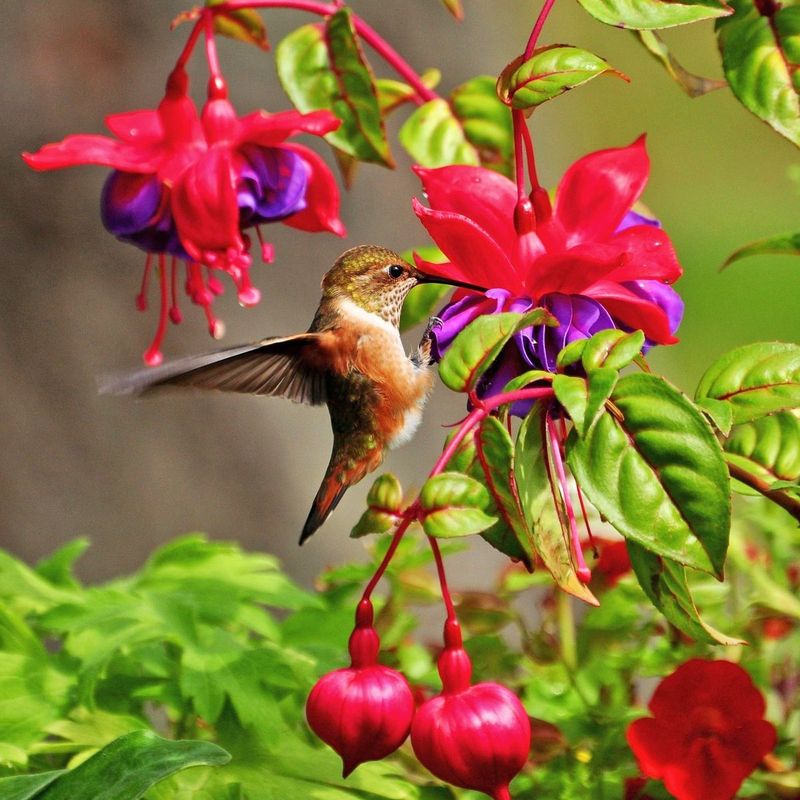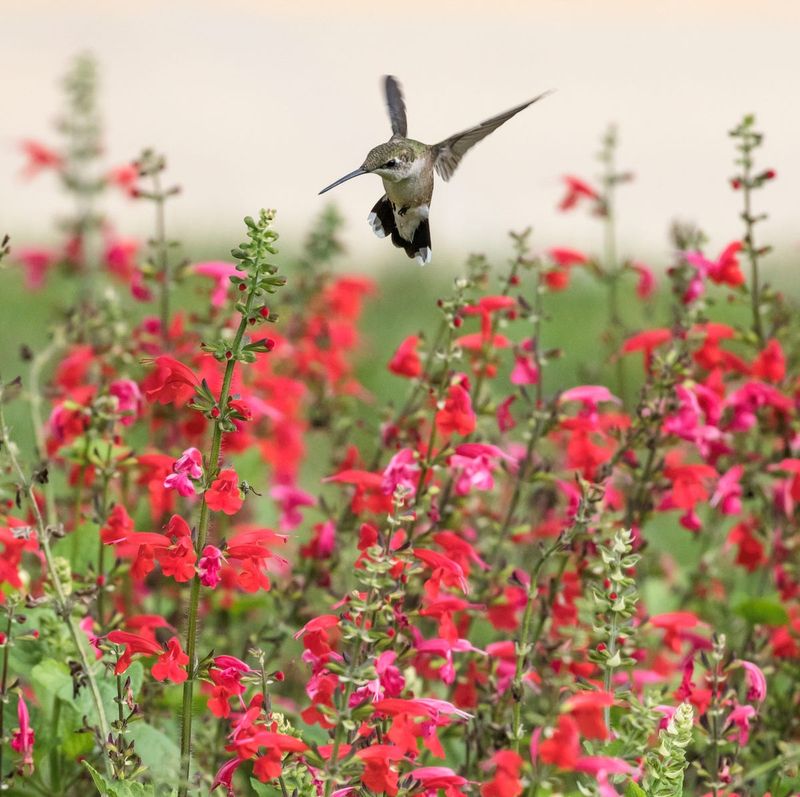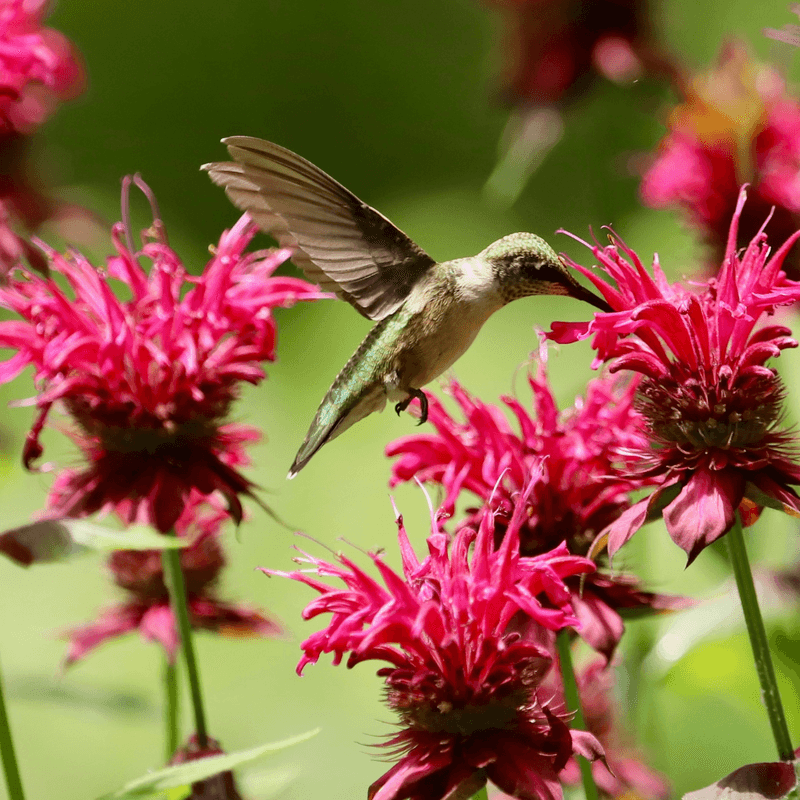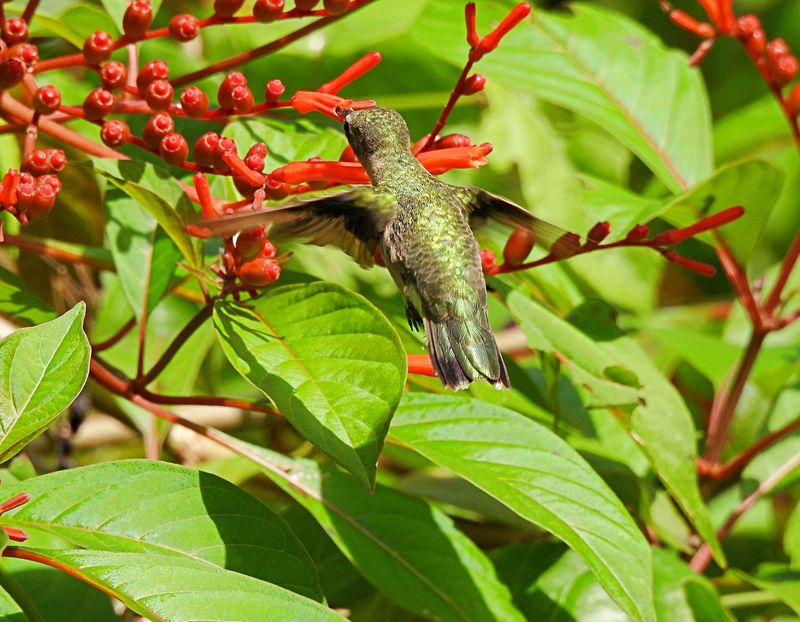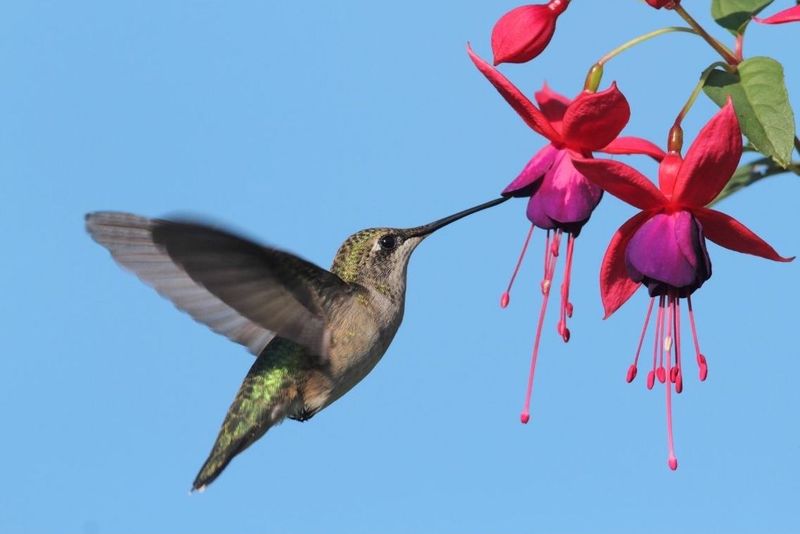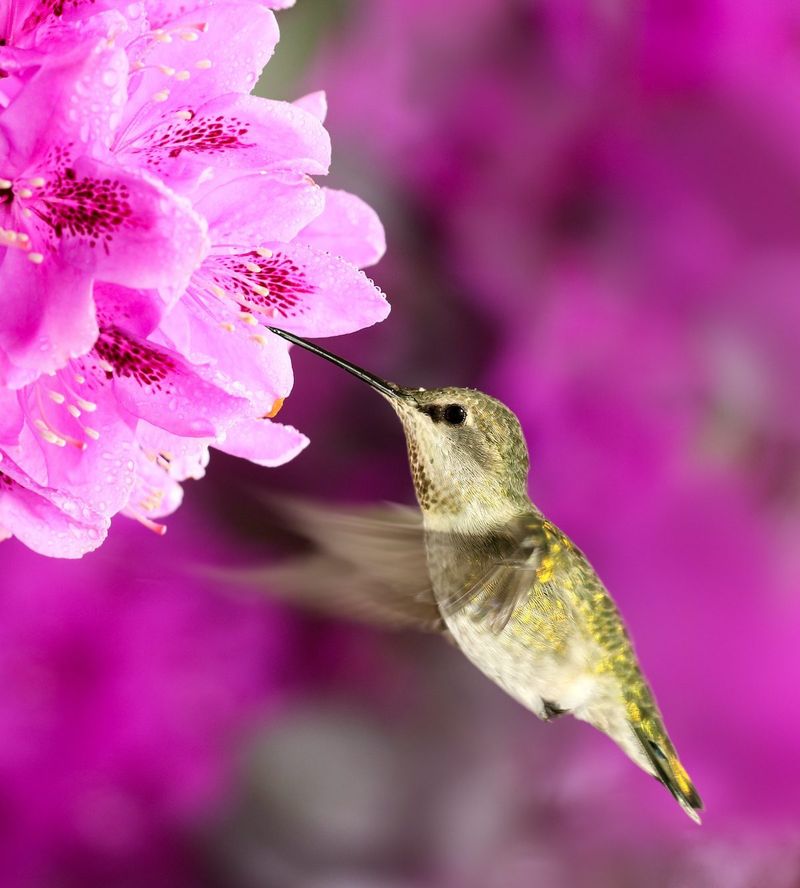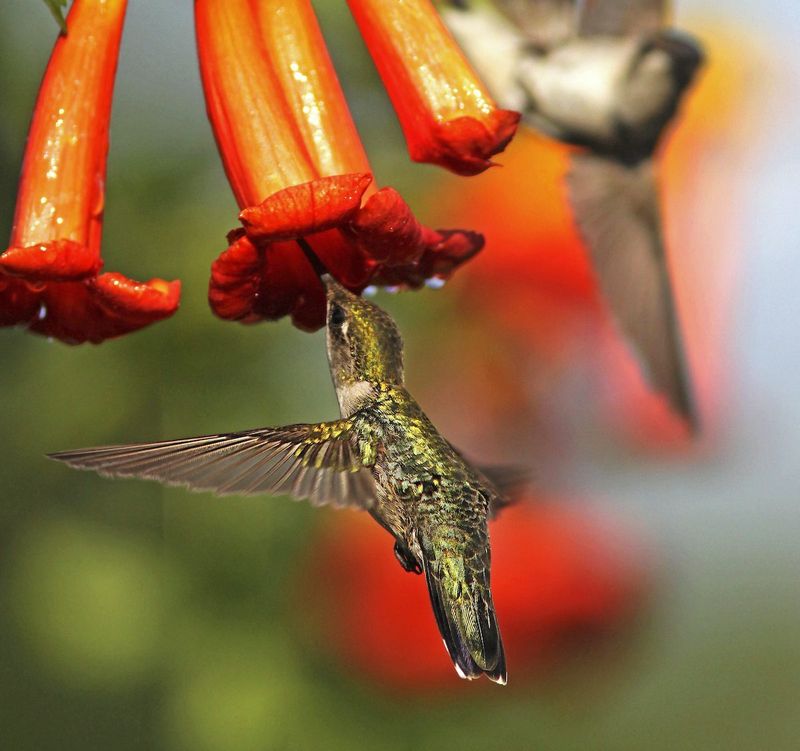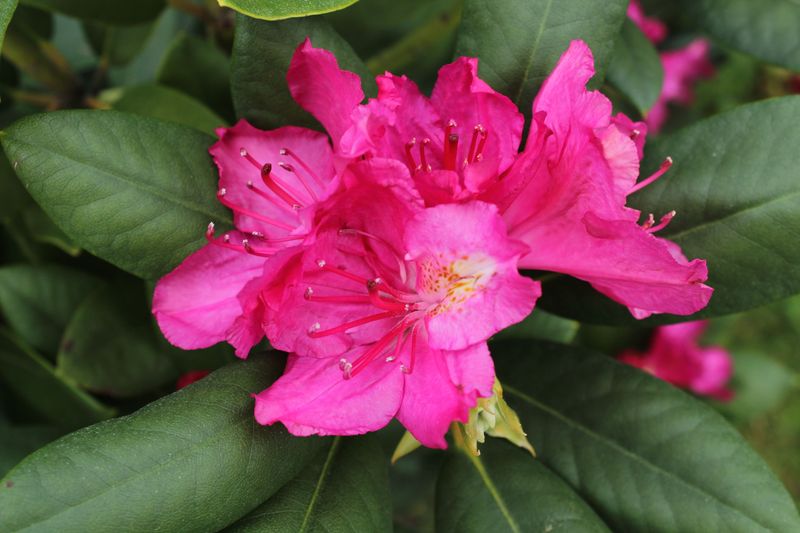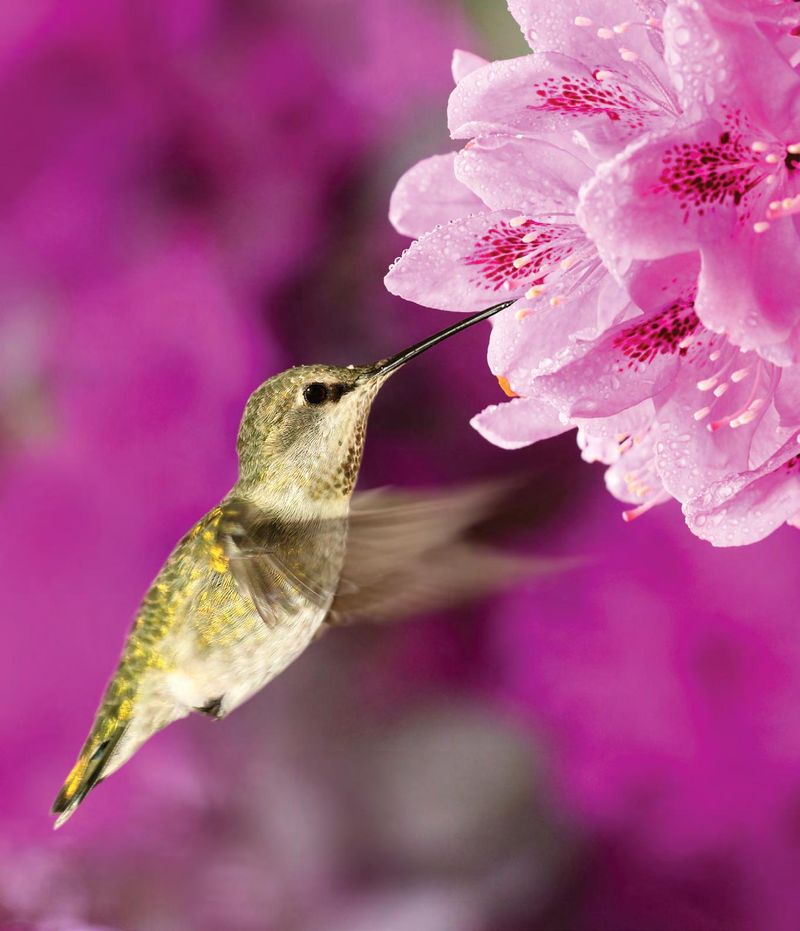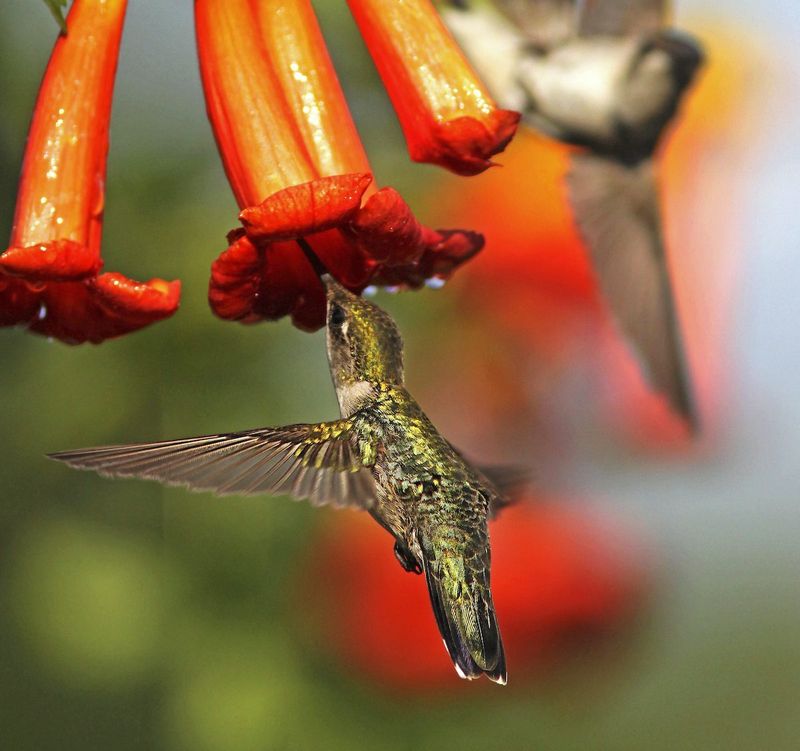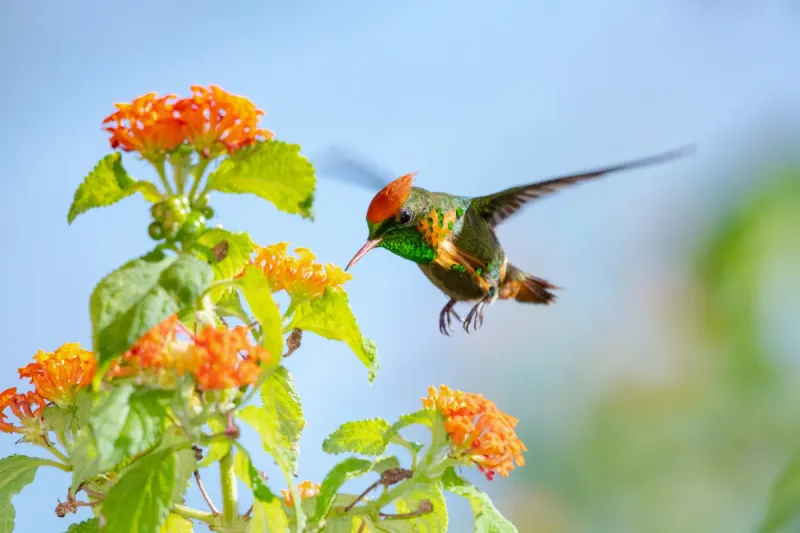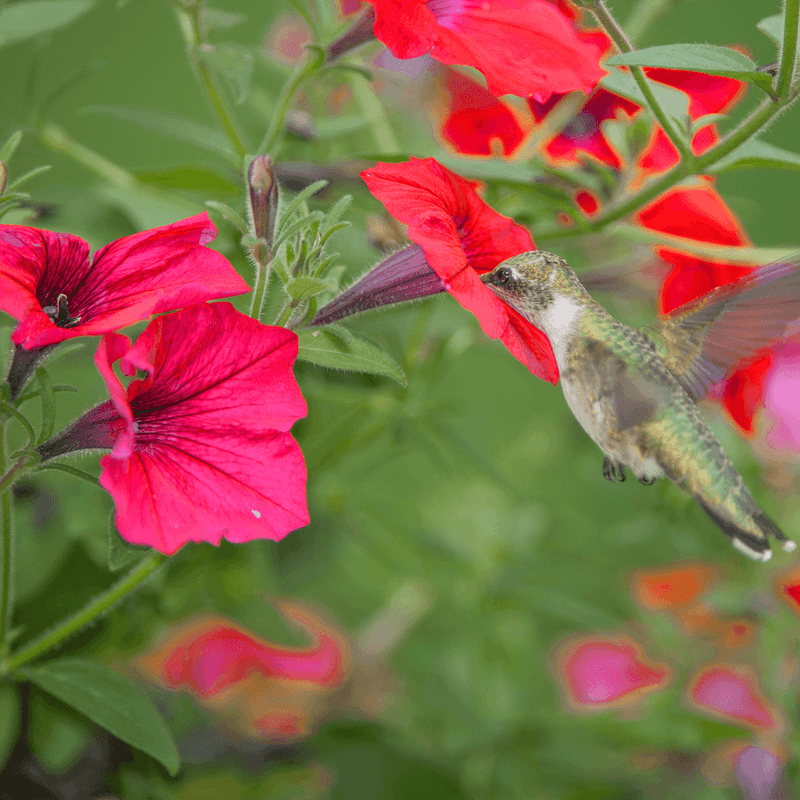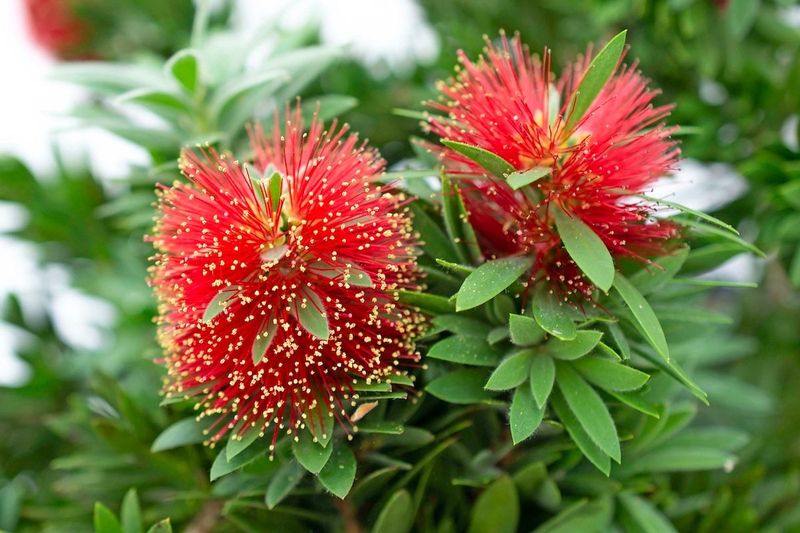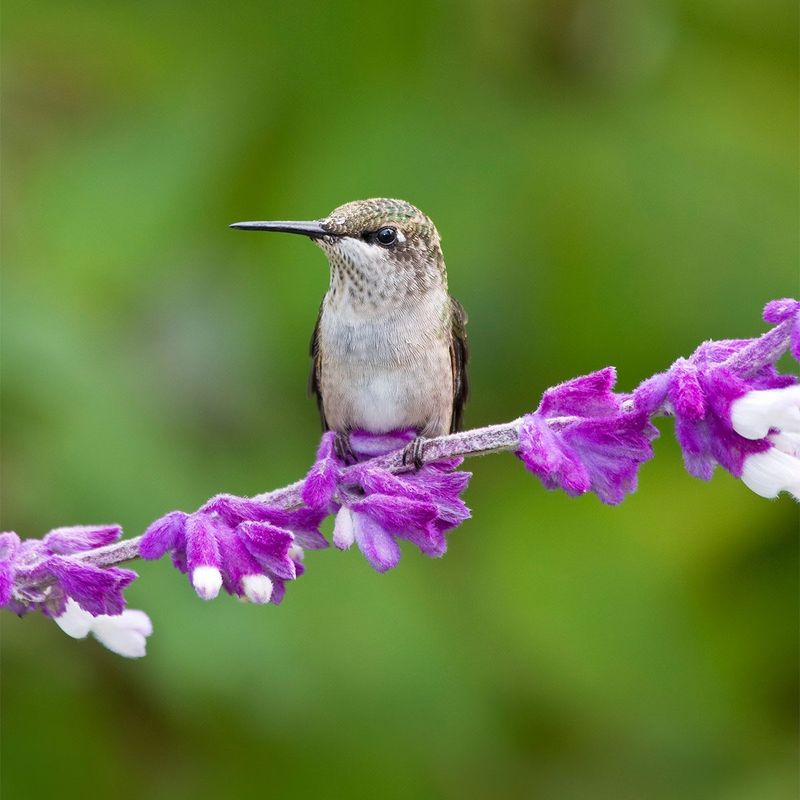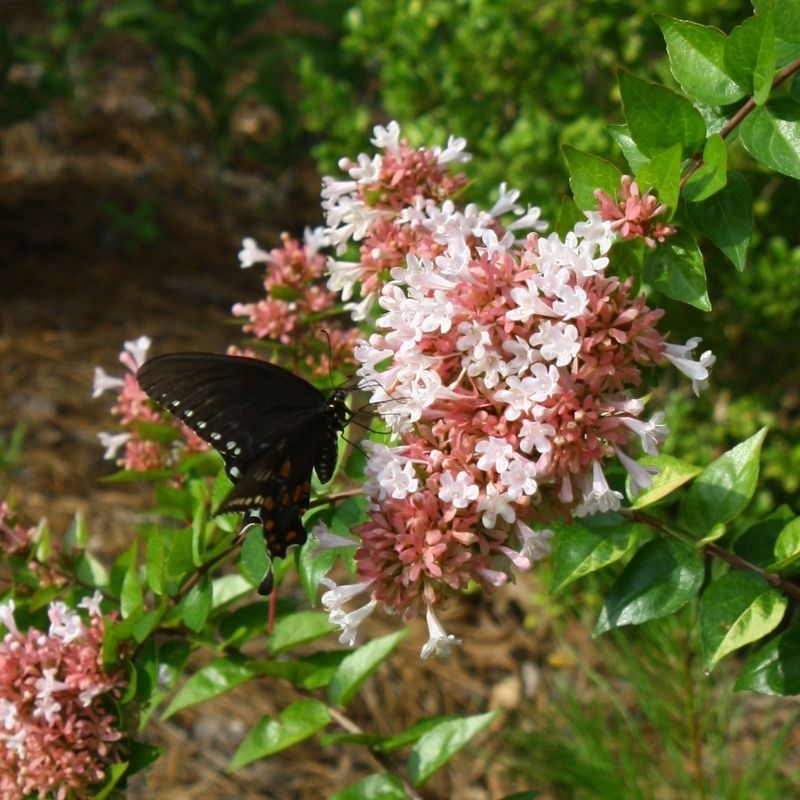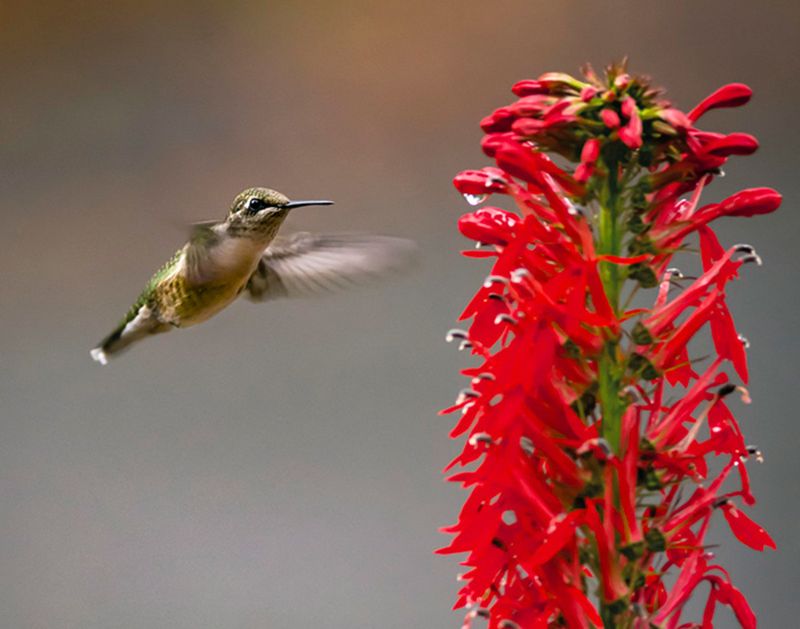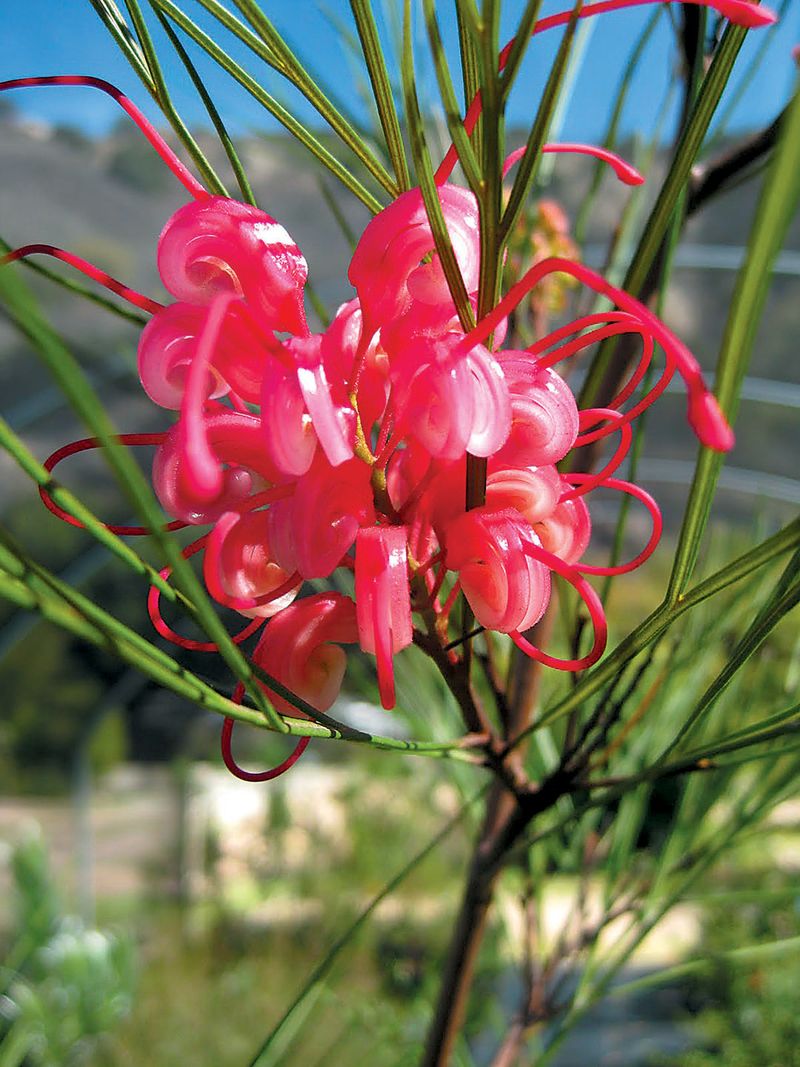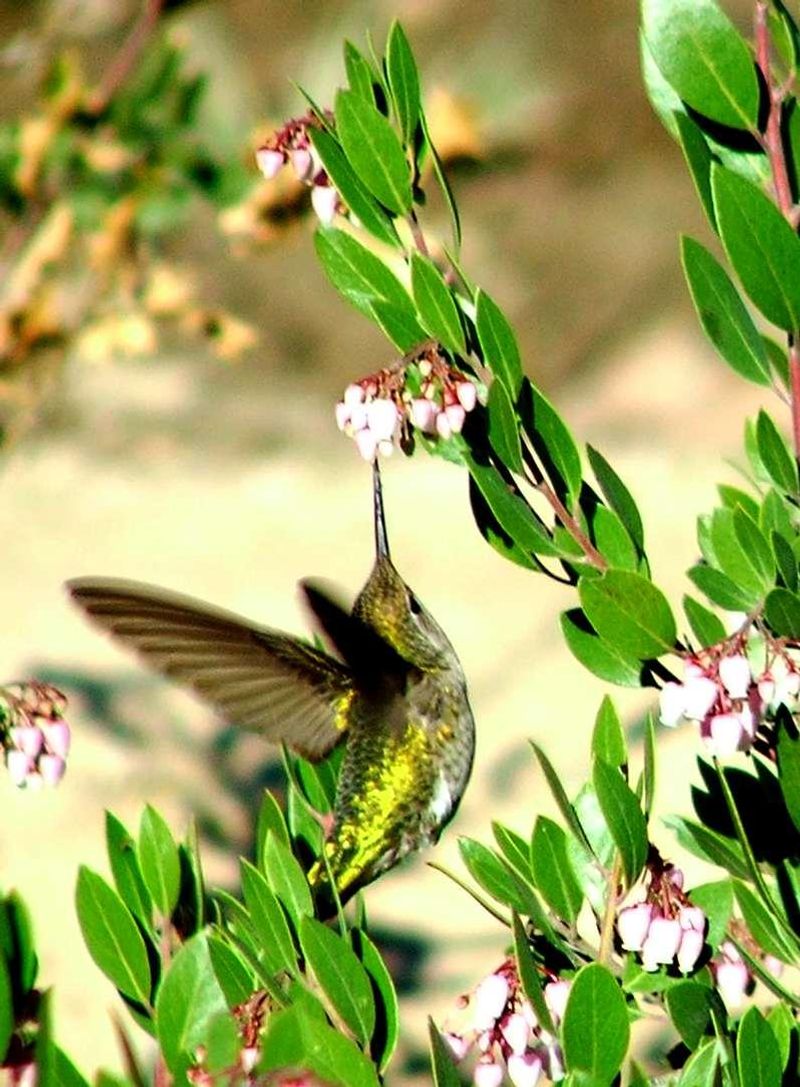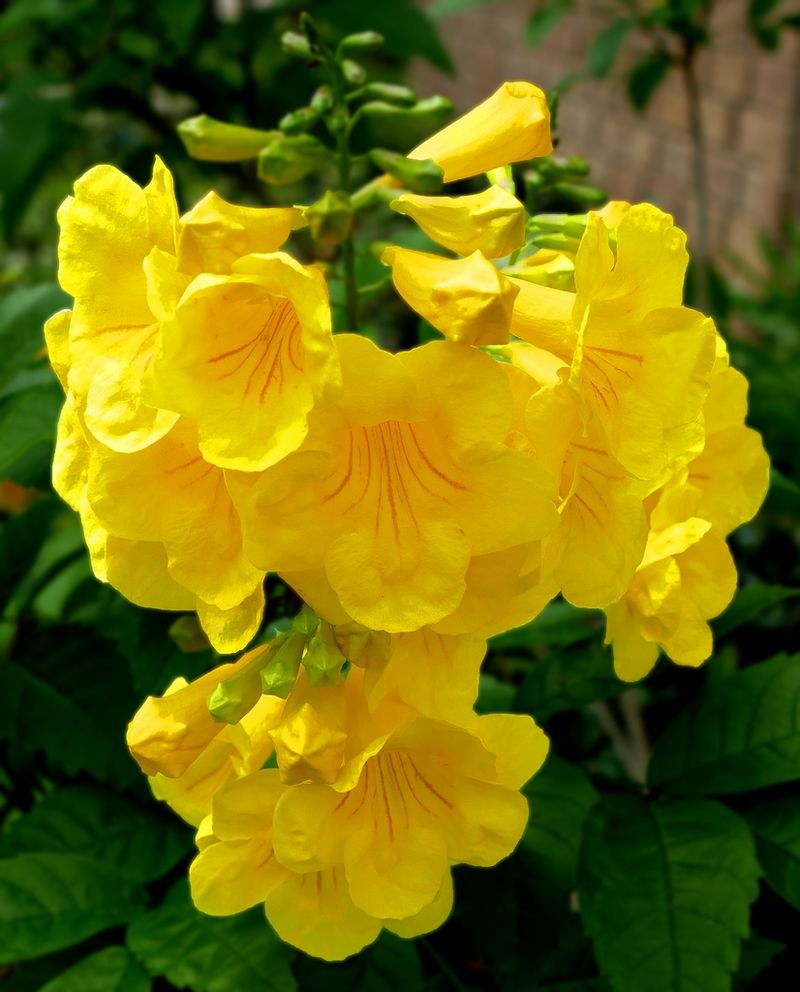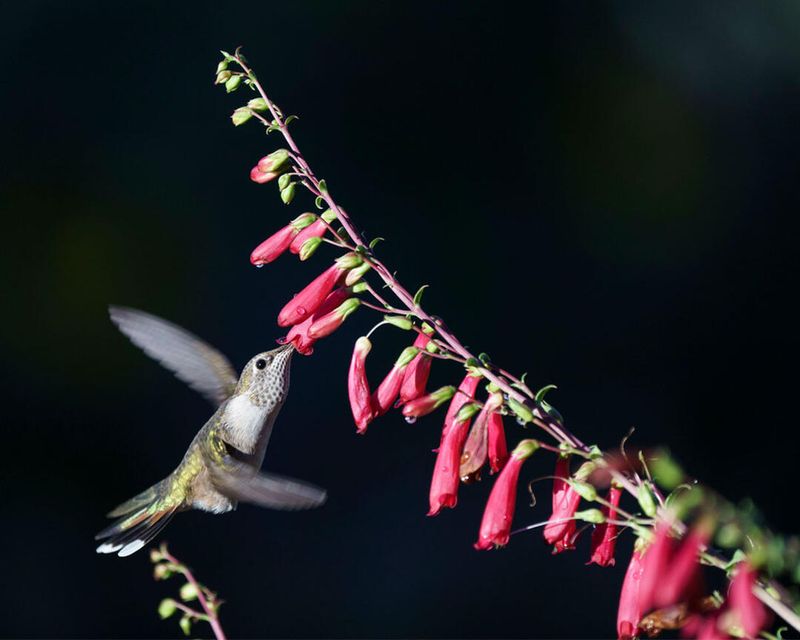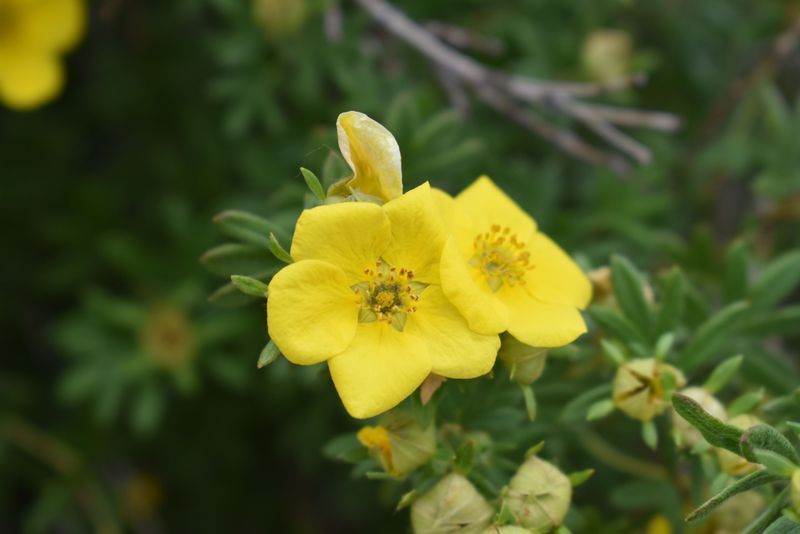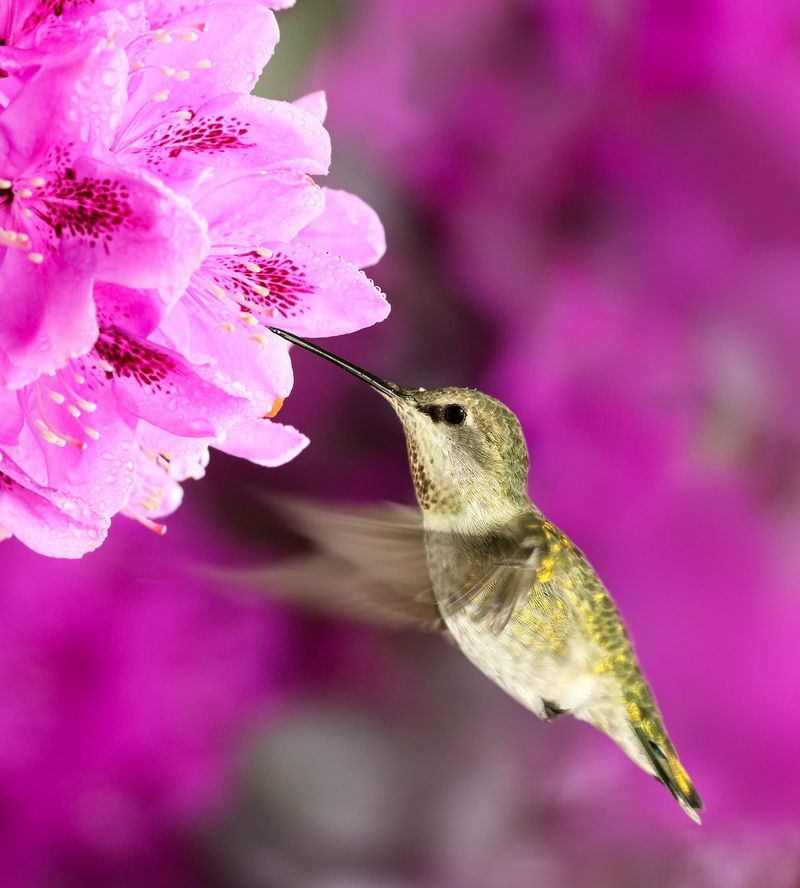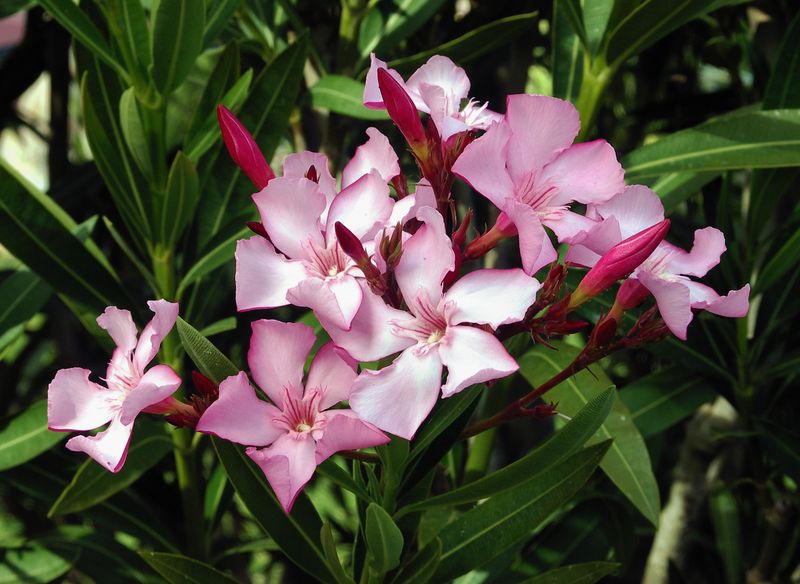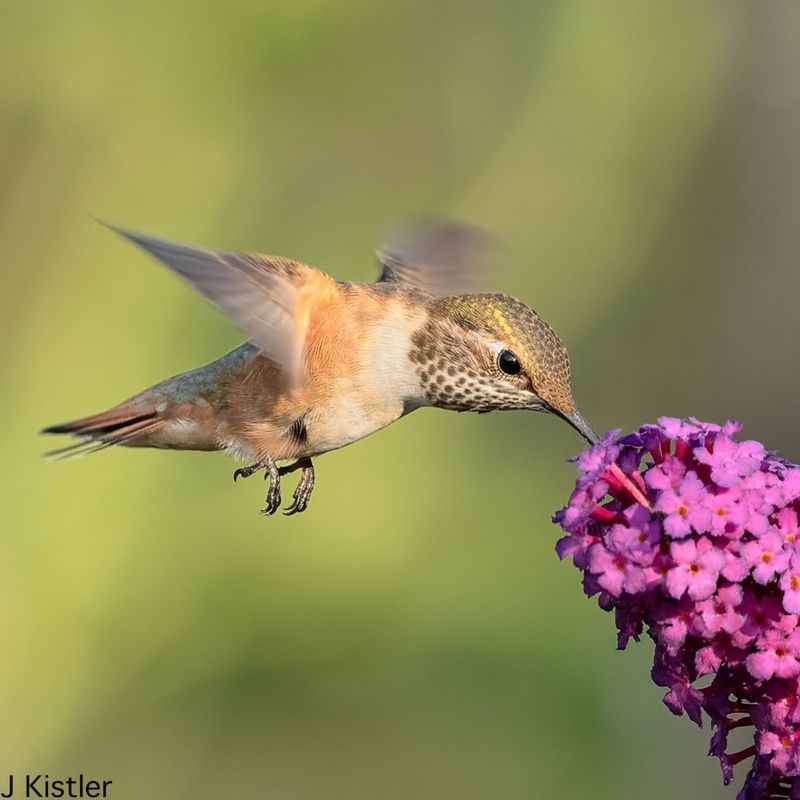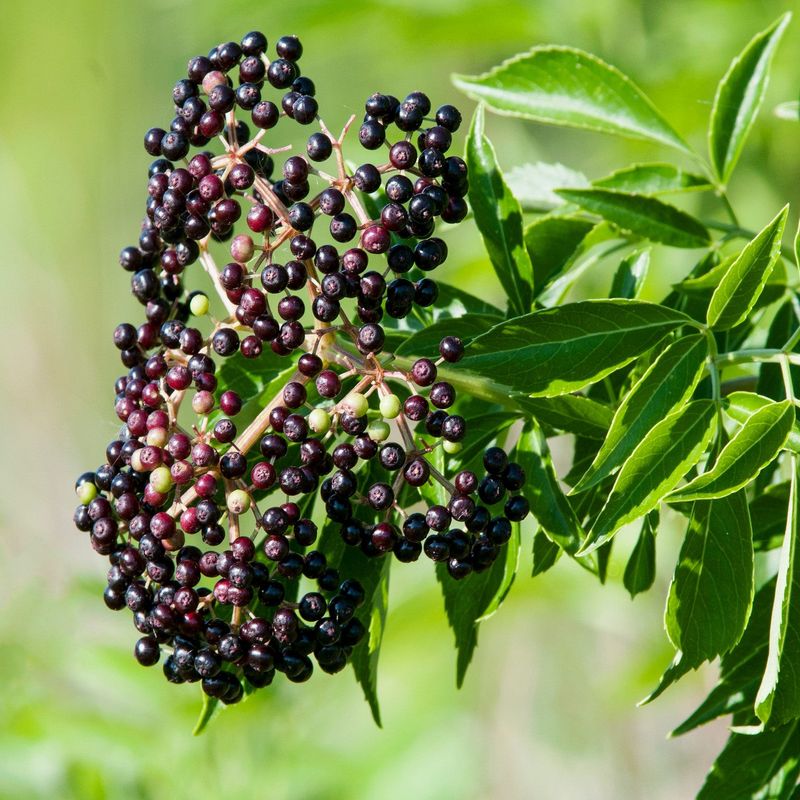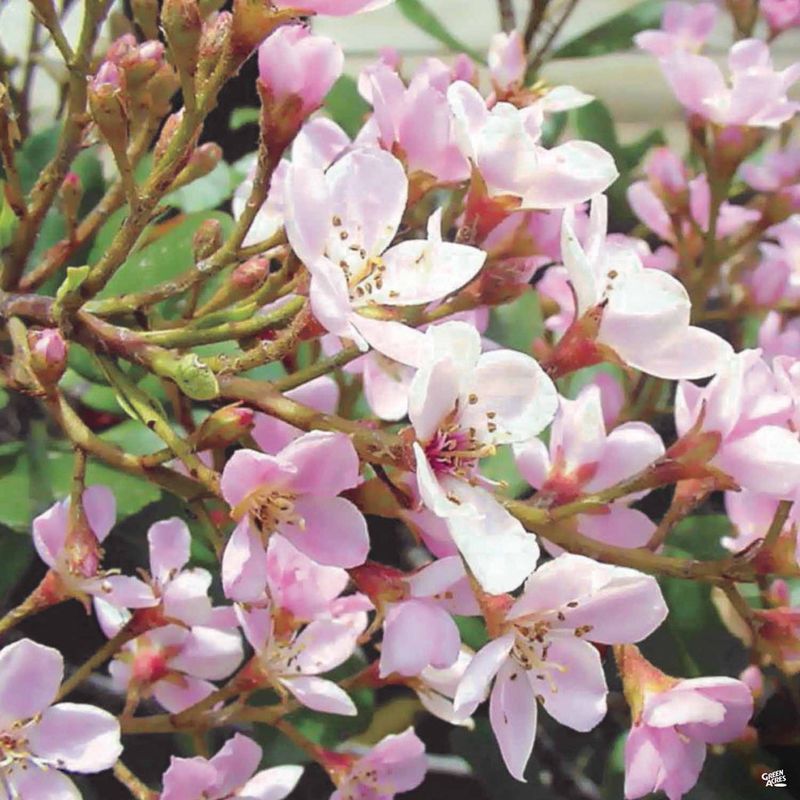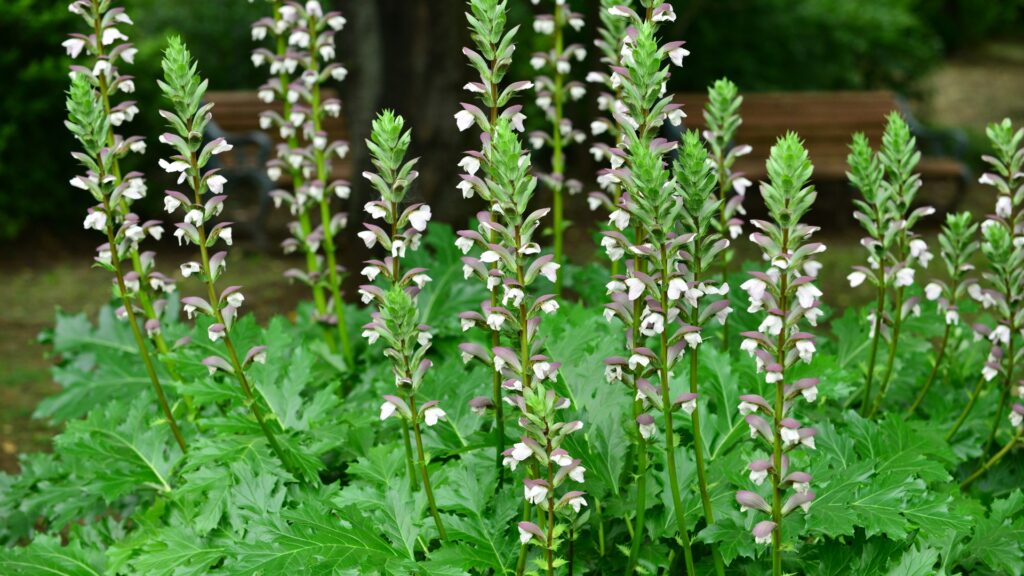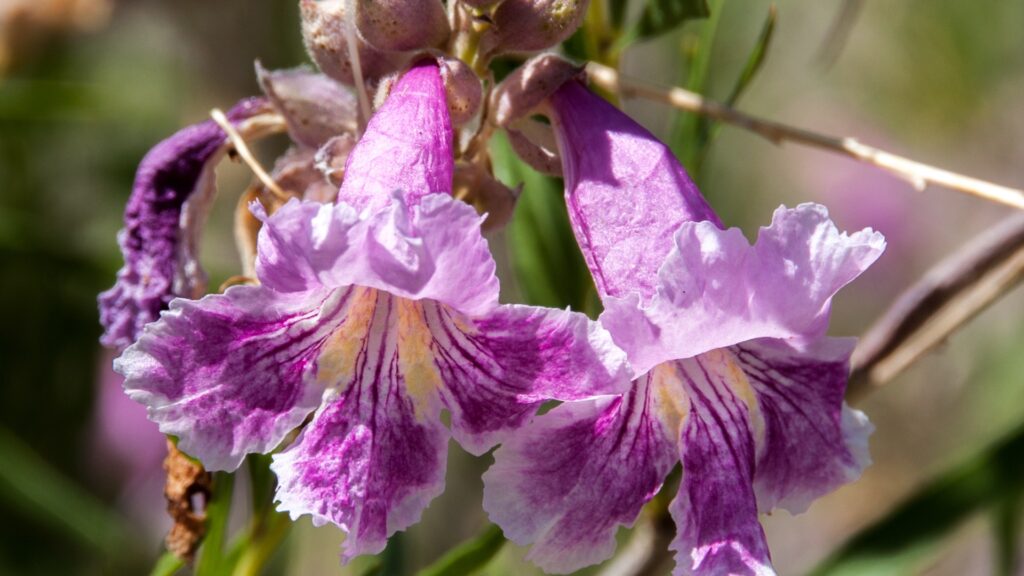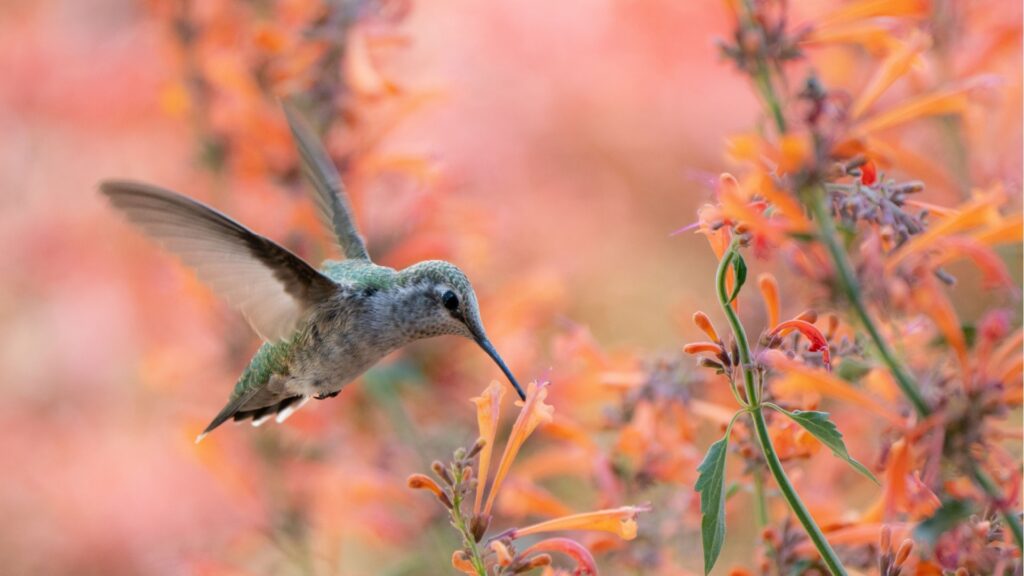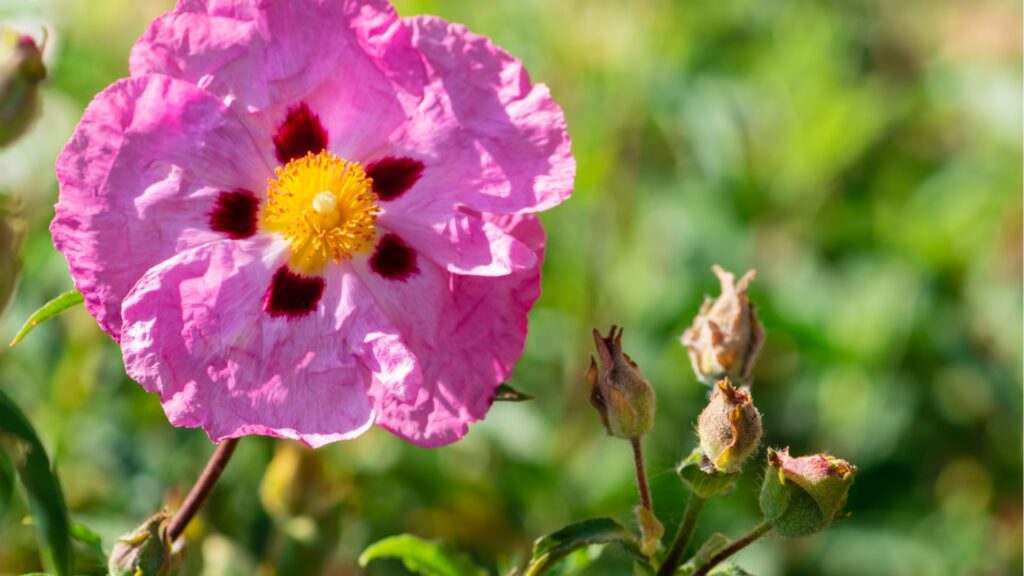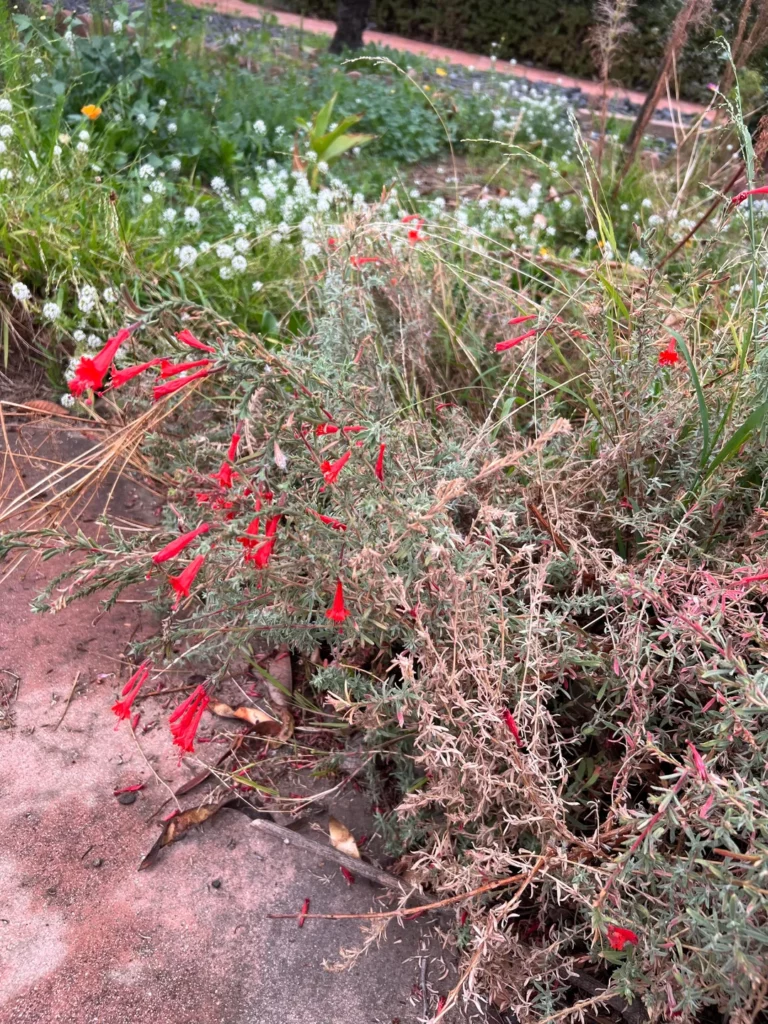Hummingbirds are like tiny jewels fluttering through the garden, and they sure know how to pick their favorite hangouts. Planting the right shrubs packed with nectar is the secret to keeping these delightful visitors coming back for more.
I’ve rounded up 34 gorgeous shrubs that not only brighten up your yard but also serve up delicious nectar treats for hummingbirds. These shrubs make it easy to create a lively, buzzing backyard that feels alive with color and movement.
Let’s make your garden the go-to spot for these little winged wonders!
1. Red Hot Poker
The garden’s unexpected fireworks! With its torch-like blossoms it keeps hummingbirds intrigued. Its spikes resemble flaming torches which create a striking focal point.
You’ll find these perennials easy to grow in sunny spots and well-drained soil. Their tubular flowers provide ample nectar, making them irresistible to hummingbirds.
Consider planting them in clusters for a dramatic effect, drawing both birds and admiration.
2. Butterfly Bush
Imagine a shrub that’s a full buffet for flying jewels! Enter the Butterfly Bush, a haven for hummingbirds. Its arching flower clusters are so rich in nectar. They are just perfect for these tiny visitors.
The plant’s forgiving nature makes it great for novice gardeners. It blooms tirelessly from summer to fall, ensuring a continuous food source.
However, in some regions, it’s considered invasive, so check local guidelines before planting. Its attraction goes beyond birds to butterflies too!
3. Cape Honeysuckle
In the realm of hummingbird favorites, the Cape Honeysuckle ranks high. Its bright orange blooms stand out like beacons. These trumpet-shaped flowers are a magnet for nectar-loving birds.
This shrub is a fast grower that often reaches substantial heights. It’s best to prune it regularly to maintain shape and encourage new blooms.
Besides its allure to wildlife, Cape Honeysuckle is drought-tolerant once established, making it a practical choice for water-conscious gardeners. Its fiery blooms are sure to light up any landscape.
4. Flowering Quince
Flowering Quince announces the season’s arrival with its vivid red and pink blooms. These blossoms are among the first to offer nectar to hungry hummingbirds after winter.
Apart from just being beautiful, this plant is dealing well with varying conditions. Its thorny branches are a natural deterrent for pests, doubling as a security measure.
Perfect for hedging or standalone displays, Flowering Quince’s early flowering offers a critical nectar source when most garden plants are still waking up.
5. Salvia
An energizer for both garden and gardener, Salvia brings life with its colorful spikes. Known for its blue and red hues, the plant’s flowers are a favorite among hummingbirds.
Salvia is forgiving, growing in tough conditions with minimal care. It’s an excellent choice for those who prefer a low-maintenance garden. Regular deadheading promotes prolonged blooming.
With various species available, there’s a Salvia for every garden style. Its long blooming season ensures that the hummingbirds have plenty of nectar from spring through fall.
6. Bee Balm
I added Bee Balm to my garden last year, and it quickly became a favorite! Its red and pink flowers are a visual treat, and the hummingbirds love them.
The plant prefers sunny spots, with aromatic foliage that adds a refreshing touch. I had a little mildew issue at first, but improving air circulation solved it.
Now, it’s a reliable addition to my perennial border, attracting both hummingbirds and butterflies!
7. Firebush
A plant that practically yells ‘come eat’ to hummingbirds, the Firebush is a must-have. Its red tubular flowers are a hummingbird’s delight, providing an abundance of nectar.
The Firebush originates from tropical regions, and enjoys warm climates but can adapt to cooler areas if protected. Its colorful display lasts from spring until the first frost.
Besides feeding the birds, it’s a fantastic background plant. Consider it for sunny borders or as a standout in mixed shrub plantings for year-round interest.
8. Fuchsia
These pink and purple flowers are a sweet treat for hummingbirds.
Fuchsias prefer cooler conditions and can be a bit fussy but are worth the effort. Regular watering and well-drained soil keep them happy.
Pruning spent blooms encourages more flowers, ensuring a long feeding season. Despite their appearance, they add a fantastic splash of color under trees or as container plants on shaded patios.
9. Weigela
A shrub that dresses up the garden with elegance! These blossoms are a favorite of hummingbirds, offering ample nectar.
Weigela is remarkably easy to care for, making it a great choice for gardeners of all levels. It blooms in late spring and may give a second show in fall if conditions are right.
Its arching branches add a graceful touch, whether used in borders or as a standalone feature. Regular pruning keeps it in shape and maximizes flowering potential.
10. Coral Honeysuckle
I love how Coral Honeysuckle twirls and climbs, adding vertical interest to any garden. Its coral-red flowers are a hummingbird’s delight!
Have you ever thought about using a vine like this instead of invasive ones? It’s a beautiful and eco-friendly alternative. I’ve found it grows on fences, trellises, and arbors, creating a natural screen.
Regular pruning keeps it in shape and encourages more blooms. Plus, in mild climates, the leaves stay semi-evergreen, perfect for year-round beauty.
11. Azalea
Garden corners come alive with Azaleas and their bright blooms. These shrubs offer nectar to hummingbirds through their numerous flowers.
Azaleas prefer dappled shade and acidic soil, making them a bit specific in their needs. However, they reward you with a stunning spring display.
Choose from a wide range of colors and sizes to fit your garden aesthetic. Regular mulching and careful watering help them thrive, ensuring they remain a highlight for both birds and human admirers alike.
12. Rhododendron
In the forested parts of a garden, Rhododendrons reign supreme. Their clusters of pink and purple flowers provide nectar for hummingbirds.
These shrubs thrive in well-drained soil and prefer cooler climates, much like their close relatives, the Azaleas.
Rhododendrons require some maintenance, such as deadheading spent blooms, to ensure a healthy display each year. With their evergreen nature, they offer structure and color even in the off-season.
13. Trumpet Vine
Garden walls transform into hummingbird hubs with Trumpet Vines. Their orange trumpet-shaped flowers are a constant source of nectar.
This vigorous climber needs space and sturdy support, as it can become quite large. Pruning is essential to manage its growth and encourage more blooms.
While it can be aggressive, in the right place, it serves as an excellent backdrop, providing both beauty and food for hummingbirds throughout the growing season.
14. Lantana
Lantana is a burst of color and a nectar-rich treat for hummingbirds. Its clusters of small, multi-colored flowers make it an attractive addition to any garden.
Growing in sunny spots and tolerating drought, it’s a hardy choice for challenging areas. Lantanas will flourish no matter where planted.
Regular pruning encourages continuous blooms, providing a steady food supply for hummingbirds. However, it’s important to be mindful of its invasive potential in certain regions.
15. Hibiscus
When looking for dramatic garden additions, Hibiscus is a top contender. Its showy flowers attract hummingbirds with their nectar-rich centers.
Thriving best in warm conditions, Hibiscus can be grown in pots or garden beds. Regular watering and feeding keep them blooming.
Their tropical flair adds a touch of the exotic, perfect for patio displays or as garden focal points. These plants also offer a long blooming season, keeping your garden lively and hummingbird-friendly.
16. Bottlebrush
Imagine brushes dripping with nectar; that’s the Bottlebrush for you. Its vivid red spikes draw hummingbirds effortlessly.
Native to Australia, this shrub loves the sun and well-drained soil, making it low maintenance once established.
Pruning after flowering encourages more blooms, keeping the birds well-nourished. It’s also noted for its adaptability, capable of growing in various climates while adding a distinctive touch to any landscape.
17. Mexican Bush Sage
The garden gains a soft, airy appeal with Mexican Bush Sage. Its spiky purple and white flowers are a hit with hummingbirds.
This perennial thrives in sunny locations and is drought-tolerant once established, perfect for water-wise gardening.
Regular pruning in early spring keeps the plant tidy and encourages bountiful blooms. Besides its bird appeal, Mexican Bush Sage adds a soft texture to the garden.
18. Abelia
I added an Abelia to my garden last year, and it’s quickly become a favorite. Its small white and pink flowers are subtle yet beautiful, attracting hummingbirds.
Abelia prefers both sun and partial shade, making it a versatile choice for tricky spots. I love how its leaves stay colorful year-round, adding a bit of shine to my garden.
Regular pruning keeps it neat and encourages more blooms. It works perfectly in borders or as a standalone feature, offering both beauty and food for wildlife.
19. Bush Anemone
In shaded corners where brightness is needed, Bush Anemone delivers with its large blooms. Hummingbirds are frequent visitors to its nectar-rich flowers.
Native to California, this shrub prefers partial shade and well-drained soil. It’s relatively low maintenance, adding charm without much fuss.
Its evergreen nature ensures that it remains a staple of the garden throughout the year, with its white flowers providing a striking contrast against dark foliage.
20. Grevillea
Grevillea is a stunning plant that combines an exotic look with nectar-rich rewards for hummingbirds. Its intricate red and pink flowers are a favorite for these tiny visitors.
Did you know that Grevillea has such unique blooms that are favored by most of the pollinators? That is actually a big flex for a plant.
Once established, it requires minimal care, making it an easy addition to any garden. With its extended blooming period, Grevillea provides a reliable food source for hummingbirds.
21. Manzanita
A shrub that stands out for its elegant bark, Manzanita also offers small pink flowers filled with nectar. Hummingbirds find these blooms irresistible.
Native to the western United States, Manzanita prefers dry landscapes and poor soil, reflecting its hardy nature.
Its distinctive bark adds visual interest year-round, making it a favorite for xeriscaped gardens. Additionally, its evergreen foliage provides shelter and structure in the garden.
22. Tecoma
Looking for a plant that brings sunshine to your garden? Tecoma is the answer! Its trumpet-shaped flowers are a hummingbird’s delight.
Tecoma grows in hot climates and becomes drought-tolerant once established, making it easy to care for. Its lively blooms appear from spring through fall, adding color and life to your garden.
Growing quickly, Tecomas are perfect for creating natural screens or hedges. Not only do they offer nectar, but they also provide shelter for birds, making your garden a wildlife-friendly space!
23. Penstemon
If you want to attract hummingbirds, Penstemon is a must-have! Its tubular flowers, packed with nectar, come in stunning shades of pink and purple, adding a burst of color to rocky or arid gardens.
What makes Penstemon truly special is its durability. It likes sunny spots and well-draining soil, making it the perfect plant for challenging garden conditions.
With a little pruning, it keeps blooming throughout the season, rewarding you with continuous beauty. If you’re looking for a high-reward plant, Penstemon is your garden’s new best friend!
24. Shrubby Cinquefoil
Add a splash of sunshine to your garden with Shrubby Cinquefoil. Its bright yellow flowers are a source of nectar for hummingbirds.
This hardy shrub thrives in full sun and well-drained soil, making it a reliable addition to borders. Its compact size is perfect for smaller spaces.
Regular pruning keeps it neat and encourages more flowering. With its long blooming period, Shrubby Cinquefoil ensures that hummingbirds have access to nectar from spring through summer.
25. Camellia
I planted it in a shady corner of my garden and it’s become a hummingbird hotspot. It’s blooms practically invite these tiny visitors.
This beauty grows in acidic soil and dappled shade, making it a perfect fit for those tricky corners that need a touch of color.
Its evergreen foliage keeps things lush year-round, and with a little pruning after flowering, it just keeps on giving.
If you want a plant that provides structure, stunning blooms, and a hummingbird feast, Camellias are your new best friend!
26. Oleander
A resilient option for sunny gardens, Oleander displays pink and white flowers that draw in hummingbirds.
This shrub thrives in warm climates and tolerates drought well, making it perfect for Mediterranean-style gardens. It grows quickly and can reach large sizes, ideal for creating privacy screens.
Despite its beauty, all parts of Oleander are toxic, so handle them with care. Its hardiness and long-lasting blooms make it a staple in many garden designs.
27. Buddleia
For gardens that demand flair, Buddleia is the go-to. Its elongated purple and white flower spikes are a hummingbird favorite.
This shrub is easy to grow, thriving in sunny locations with well-drained soil. Regular deadheading promotes a longer blooming season.
While it’s a stunning addition, Buddleia can be invasive, so check local guidelines. Its attraction isn’t limited to hummingbirds; butterflies love it too!
28. Elderberry
In woodland corners, Elderberry makes its mark with clusters of white flowers. These nectar-rich blooms attract hummingbirds effectively.
Elderberry is adaptable, thriving in various conditions from full sun to partial shade. Its dark leaves add a lush backdrop to its delicate blooms.
Beyond its beauty, the shrub produces berries that are a favorite with birds and can be used in culinary delights. It’s an ecological asset, supporting a range of wildlife.
29. Indian Hawthorn
A compact shrub with an elegant touch, Indian Hawthorn boasts pink flowers that hummingbirds adore.
This shrub prefers sunny locations but can tolerate partial shade, making it versatile for various garden designs. Its leaves add year-round interest.
Regular pruning helps maintain its shape and promotes flowering. Indian Hawthorn is a resilient choice for borders or container planting, offering structure and beauty with minimal effort.
30. Anisacanthus (Flame Acanthus)
If there’s a plant that screams “hummingbird magnet,” it’s Flame Acanthus. Its fiery red-orange tubular flowers are like neon signs for nectar-seeking birds.
This heat-loving shrub thrives in dry conditions, making it ideal for xeriscaping or low-maintenance gardens. I planted one near a sunny wall, and it’s become a hummingbird hotspot every summer.
Flame Acanthus also attracts butterflies, and its open, airy shape adds a soft wildness to the landscape. Prune it back in early spring to encourage dense new growth and even more blooms.
31. Desert Willow
Despite its name, this isn’t a willow at all—but hummingbirds don’t seem to mind! The Desert Willow’s orchid-like flowers bloom in shades of pink, purple, and even white, rich in nectar and hard to miss.
Perfect for hot, arid climates, this small tree-like shrub loves full sun and well-drained soil. Once established, it needs very little water, yet rewards with an explosion of blossoms all summer long.
Its wispy form and graceful branches offer a light, airy presence in the garden. If you’re seeking a blend of beauty and resilience, the Desert Willow is your hummingbird-approved solution.
32. Hummingbird Mint (Agastache)
If ever a plant was named with purpose, it’s Hummingbird Mint! With its tall spikes of tubular blooms in sunset shades, this shrub is a consistent favorite of nectar-loving birds.
Agastache thrives in full sun and well-drained soil, making it perfect for dry, sunny spots in your garden. It’s also fragrant, with a lovely licorice scent that adds a sensory bonus for gardeners.
Deadhead the spent blooms to keep flowers coming, and you’ll enjoy a pollinator-friendly show from midsummer into fall. Drought-tolerant and deer-resistant, Hummingbird Mint is a win-win addition for any wildlife-friendly landscape.
33. Rockrose (Cistus)
Want a fuss-free shrub that brings in the hummingbirds? Meet Rockrose. Its paper-thin blooms may look delicate, but this shrub is a powerhouse when it comes to resilience and nectar production.
Rockrose is native to the Mediterranean, which means it loves the sun and shrugs off drought with ease. Its blooms appear in pink, white, or purple and typically open in the morning—just in time for hungry hummingbirds.
Ideal for poor soils and rocky sites, this low-maintenance plant requires little care beyond annual pruning. It’s a great pick for those seeking a natural look with ecological benefits.
34. California Fuchsia
A late-season lifesaver for hummingbirds, California Fuchsia bursts into bloom just when other nectar sources are fading. Its fiery red-orange trumpet-shaped flowers are a beacon for these energetic flyers, especially in the fall months.
Native to the western United States, this hardy perennial shrub thrives in dry, rocky soil and full sun. It’s a natural choice for xeriscapes and wildflower gardens. Once established, California Fuchsia is highly drought-tolerant and requires minimal maintenance.
To keep it looking tidy and blooming longer, cut it back in late winter. Whether spilling over retaining walls or brightening up a dry border, this tough little plant offers a vibrant finale to the gardening season—just in time for migrating hummingbirds on their journey south.

